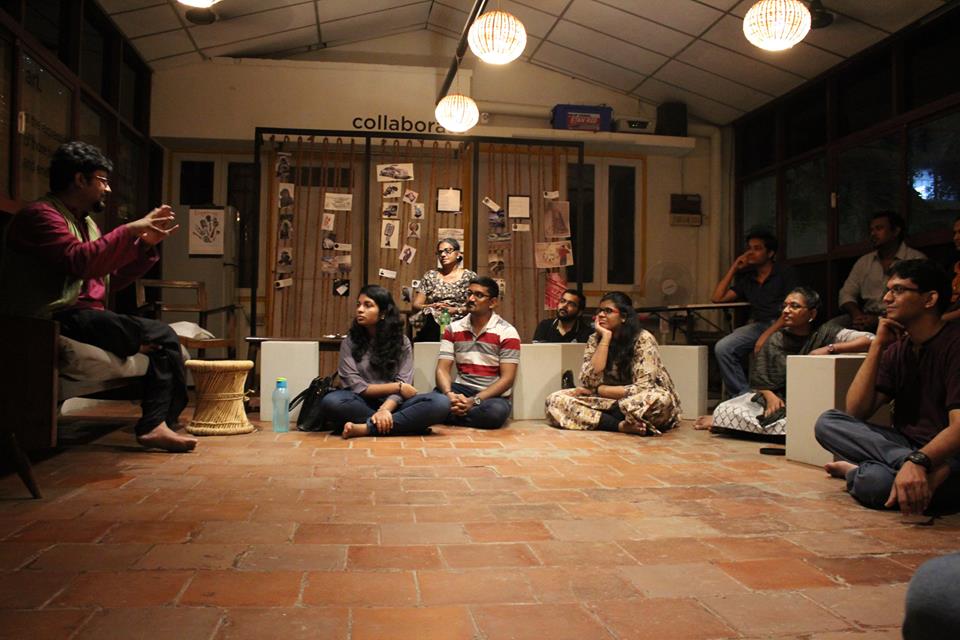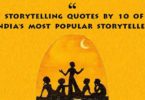Storytelling is a profession driven by passion – the passion of storytellers in their love for stories. There is nothing blue-collared about this profession and yet, it is used frequently enough in the corporate space. Marketing is nothing but storytelling packaged in smaller capsules. Presentations in workspaces have knowingly or unknowingly employed storytelling for decades – in their opening pitches, in the supporting videos, even in the seemingly bland graphs and curves. But it is now that people have really started harnessing the immense power that stories bring with them.
Vikram Sridhar has been an integral part of the storytelling revolution in India and a firm believer in breaking stereotypes in stories and storytelling. He has been a mentor, a steady to source of knowledge, inspiration and champion for storytellers around the country.
His thoughts on corporate storytelling in his words.
On Storytelling in the boardrooms.
Stories can be used as long as two human beings connect with each other. The environment really doesn’t matter as long as you are able to establish that connection. But, just because I have a story to tell, it doesn’t necessarily become an effective aid. A story must have an emotional connect. Only then it makes a difference. So if necessary, instead of telling a story, I might share my story after I have felt it with a purpose.
Your comment on the creative implications of Corporate Storytelling.
Boardroom conferences tend to make use of presentations, audio/visuals and similar accessories. Here, the stories can be used towards an end, not unlike how stories are used by parents to feed their kids, or how stories are used in dance forms to create a visual effect. This in itself is quite different from storytelling, where the story itself is the main focus and the end result.
We use a story and rephrase it in many ways to connect with people. That way, you can ensure the purpose of stories is far more effective than just narrating it alone.
Storytelling for CSR and Team Building activities – inspiring ideas and instilling confidence.
Let’s take an example of a group of volunteers spending time with kids from an NGO – a part of CSR. Here the group seldom knows the real purpose of such an activity. As a result they are quite ambiguous about their experiences with these kids.
Instead, when you use a story, there is a far better connect with the kids. Most of the times, because of their experiences, the volunteering group believes that they are contributing something. But, they are in fact learning from these kids through the medium of stories, and expanding their own breadth of experiences and understanding of the world – both of which are invaluable assets and build a person’s confidence.
When we listen to the stories of these kids, it offers us an altogether unique experience and this is called personal storytelling where we get to know about their lives.
Additionally, it is important for people in any organization to understand the vision of the company. This is often unclear in a large corporation. In such a scenario, it is necessary to make them understand the vision through stories about the history of the organization and its growth. This is necessary to establish an emotional connect with the journey of the organization. Only then will they strive to attain those goals, and that is where working as a team will play a prominent role.
On corporate sectors and storytelling platforms to come together in order to enrich the experience of storytelling and take it to a bigger level.
Why not? Let’s consider the present scenario itself. Unlike stand-up comedy that has reached a bigger scale of audience, storytelling is yet to find its roots.
I believe that the stories we heard make the world of today in terms of our identities, prejudices and stereotypes. The stories we share today make the world of tomorrow. The stories that we share today in any context, corporate sectors, in performances or in the families, will lay the foundation for the future.
Our thoughts and choices are majorly based on the stories that we have heard from various sources and forms. These stories come in different mediums – advertisements, movies, prints etc. This is where corporate sectors and art forms can come together in reviving the essence in an all-new way.
Art has always been seen as an intermediary between the common man, and the creators and connoisseurs of art. These art forms have to bridge the extremes and I believe storytelling, in particular, has to attain that level. Lots of efforts towards this end are underway at vernacular levels. But English is an important medium in today’s era, so I feel it is pertinent that a a new genre of storytelling in this language has to come up to fulfill this purpose.
—
Don’t forget to catch the first part of Vikram’s interview on “Stories and Their Relevance to Life” here.
—
Vikram Sridhar is the Founder of Around The Story Tree – A Storytelling Venture. He is also a Founding Member at Bangalore Storytelling Society, Founding Member at The BeSt Festival: The Bengaluru Storytelling Festival and Co-founder at theater group Tahatto. Read more about his work as a storyteller here.
—
This article is a part of our #MondayColumns on #Storytelling. Interview compiled with inputs from Vikram Sirdhar. If you wish to contribute to this column, write in to editor@tell-a-tale.com.





